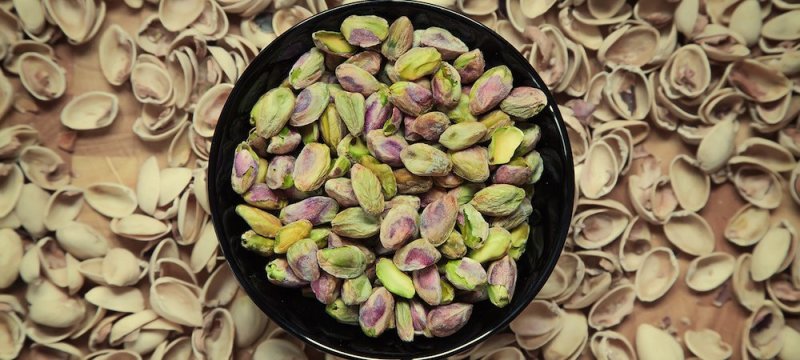Vegetarianism and Veganism
There are approximately 4.3 million vegetarians in the U.S., and an additional 3.7 million are vegan. People choose to forego meat for many reasons, whether it be dietary restrictions, religious reasons or ethics reasons.
A vegetarian may choose to ban some or all foods of animal origin from their diets, depending on the type of vegetarianism they follow. Pescatarians add fish and seafood to a vegetarian diet, while pesco-pollo vegetarians eat seafood and chicken. Contrastingly, a vegan eats only plant foods, completely removing all meat, dairy and egg products from their diet.
The Myth Behind Vegetarianism and Protein
Protein is a fundamental component of every cell in the body. It is an important building block of bones, muscles, cartilage, skin and blood, giving our bodies the ability to build and repair tissue.
Because protein is commonly found in meat and eggs, there’s a common misconception that if you are a vegetarian or vegan, you are not getting enough protein in your diet. But while animal products are an excellent source of protein, they aren’t the only source. There is an abundance of plant-based products that fulfill the daily value requirements for protein — from soy-based products to nut butter, here is a list of some of the best sources of protein for vegetarians and vegans:

Soy Products
Edamame
Edamame is a soybean that was harvested while the bean was still green and sweet tasting. It is high in protein and fiber, containing about 17 grams of protein per 1 cup serving. Many people enjoy it as a snack between meals or doused in soy sauce as an appetizer for sushi. To enjoy the benefits of this nutritious snack, boil the pod in slightly salted water for about 15 to 20 minutes before eating.
Tofu
Also made from the soy plant, tofu is a byproduct made by curdling fresh, hot soymilk with a coagulant. It has a mild flavor and therefore lends itself well to the tastes of marinades, spices and seasonings. Tofu also packs a low-sodium protein punch, with just about 10 grams of protein per a half-cup serving. Tofu can be prepared in almost any way imaginable — you can puree silken tofu into soups, sauces and dips for a relatively tasteless bit of added protein, or you can dice up denser water-packed tofu to use as a meat substitute or toss into a stir-fry.
Tempeh
Tempeh is a base of fermented soybeans, and with a mild nutty flavor and 15 grams of protein per a half-cup serving, it’s a no-brainer as a mix-in to meatless casseroles and chilis. You can find it in most Asian food stores or the refrigerated section of most grocers.

Beans & Legumes
You can find beans in just about everything, from burgers and salsas to hummus and chili.
Black Beans
Black beans are of the most abundant sources of antioxidants among all of the beans and legumes, at around 16 grams of protein per cup. Mix them with quinoa and other seasonings for a hearty, meatless burger or sprinkle them into soup for that extra boost of fiber.
Garbanzo Beans
Another fan favorite is the garbanzo bean, or chickpea, which helps to stabilize blood sugar and lowers the risk of type 2 diabetes. They pack a hefty protein punch as well, coming in at about 14 grams of protein per cup. You can puree them into hummus or use them as the base of a healthy meal.
Lentils
Lentils can be sprinkled into just about any savory dish you like — and with 18 grams of protein per cup, they will provide a large dose of protein? Throw them into a salad or soup, or simply add seasoning and enjoy them on their own.

Vegetables
Peas
Many vegetables contain a high amount of protein. A one-cup serving of peas contains 7.9 grams of protein, making it one of the highest available sources of protein amongst vegetables. They can also be blended into hummus, though they’re even great pureed into a pesto.
Kale
Kale is the definition of a superfood. This trendy leafy green serves up a heart-healthy, protein-filled punch. Just one cup of chopped kale provides about 3 grams of protein. Other than using it as a base for a salad, you can also blend it into a green smoothie or pureed into a pesto served on top of whole-grain pasta.
Broccoli
Cooked or raw, broccoli is a high-fiber, high-protein veggie that can be enjoyed either as a snack or part of a main dish. In addition to its 4 grams of protein per serving, broccoli is a low-calorie veggie containing an array of essential vitamins and minerals.

Nuts & Seeds
In addition to being a good source of fiber and fats, a one-ounce serving of nuts and seeds provides from 8 to 18 percent of the daily value of protein.
Hemp Seeds
Just 3 tablespoons of hulled hemp seeds provides you with around 10 percent of your daily value of protein. Hemp seeds are also considered to be a complete vegan protein, rich in iron, chlorophyll, magnesium, Vitamin E and B vitamins. They are also one of the easiest seeds to digest.
Peanuts
Peanuts, though technically considered legumes, are another plant-based protein rich in fiber and unsaturated fats. A 1-ounce serving of peanuts provides 7 grams of protein — and if you enjoy peanuts in their more spreadable form, just two tablespoons of nut butter on your morning toast provides you with around 8 grams of protein.
Almonds And Pistachios
Almonds and pistachios are another excellent option for vegetarians, as they can be enjoyed as a snack or blended into delicious nut butter. They both provide about 6 grams of protein per ounce. You can chop them up as a garnish for salads or cook them with oats and honey for healthy, grain-free granola.
Whether you’re vegan, vegetarian, or just experimenting with a plant-based diet, getting enough protein on your plate should never be an issue.
